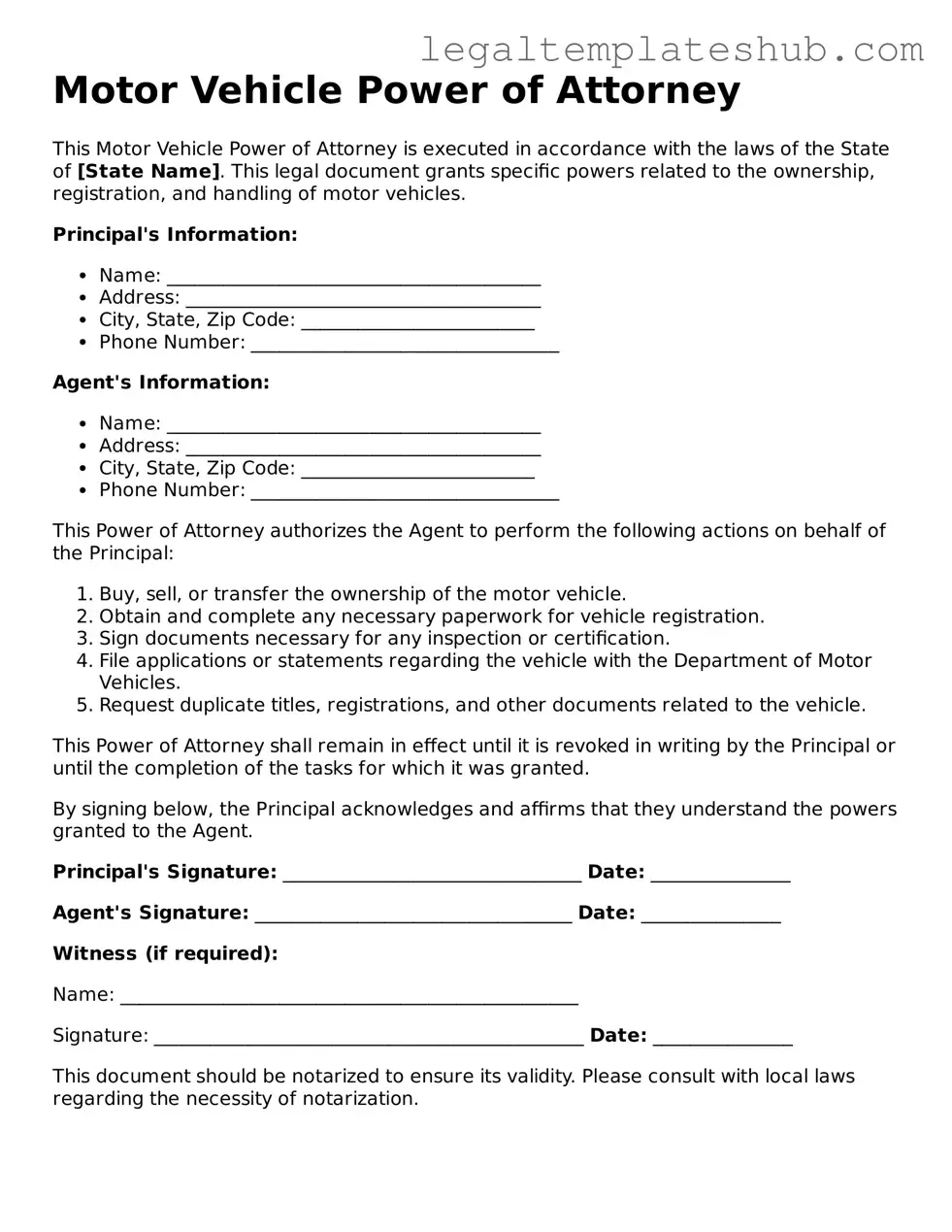Printable Motor Vehicle Power of Attorney Template
The Motor Vehicle Power of Attorney form allows an individual to authorize another person to act on their behalf regarding vehicle-related matters. This legal document can be essential for tasks such as transferring ownership or handling registration issues. For those needing assistance with vehicle transactions, filling out this form can streamline the process; click the button below to get started.
Access Editor
